
Fatigue Science’s Readi vs Predictive Safety's PRISM Fatigue Management System
Which is the right fatigue risk management system (FRMS) for your fleet?
While both Fatigue Science’s Readi platform and Predictive Safety's PRISM aim to address fatigue risks in transportation, discover how they differ in their approach, features, and technology.
.jpg)
Readi Overview
Readi fatigue risk management software provides real-time predictive insights into driver fatigue, allowing you to mitigate fatigue risk before it becomes dangerous. Our system uses advanced machine learning to provide accurate predictions up to 18 hours in advance (no wearables or invasive sleep tracking required).
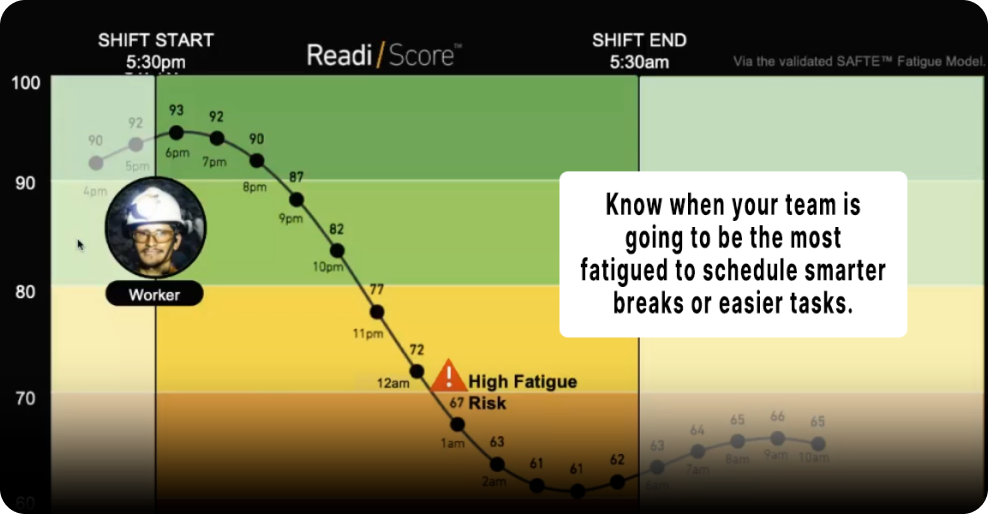
Readi Key Differentiators
Predicting Fatigue Risk for the Entire Shift
Hour-by-hour, predictive personalized fatigue scores for every driver for up to 18 hours, allowing a manager to assess the risk across the entire driver’s shift
Real-time Data Sync through Dispatch Screens
Our API-enabled ReadiDispatch allows the critical data from the Readi FRMS to be displayed on dispatchers’ existing screens, allowing them to proactively mitigate driver fatigue risk to prevent fatigue-related nuclear events on the road
No Wearable or Hardware Required
No invasive sleep tracking or wearables required
88% Fatigue Accuracy
Best-in-class sleep tracking up to 88% validated accuracy compared to a wearable
Impact Analysis
The Readi system is the only FRMS that has the ability to connect a driver’s fatigue scores to safety events (e.g., harsh braking, speeding), allowing fleet managers to quantify the impact of mitigating operator fatigue across the organization.
Validated Technology
Validated by the US Department of Transportation, the Federal Aviation Administration, and the US Army
How Readi Predicts Fatigue
Readi uses schedules, ELD data, demographic data and a 6-million-point dataset that we’ve collected over the past 15 years to predict fatigue risk.
.png)
How Readi Works
Predictive Safety: How PRISM Predicts Fatigue
PRISM from Predictive Safety relies on time and attendance and schedule analysis, sleep diaries and questionnaires, and the secondary AlertMeter® PVT test for real-time, point-in-time assessments of worker alertness.
While it provides immediate feedback on impairment, PRISM lacks the machine learning capabilities and historical sleep dataset necessary for long-term fatigue predictions, which limits its ability to forecast fatigue risks in advance. The technology is not predictive at an individual level for the shift ahead. The technology is likely to miss many cases caused by personal sleep health intersecting with schedule.
Because Predictive Safety relies solely on driver schedules, and does not use machine learning to predict fatigue, they do not offer the ability to cluster drivers against a large sleep database. This impacts accuracy and overall usefulness.
Readi Integrates with All Major ELDs for Personalized Driver Fatigue Prediction
Explore how our technology uses Hours of Service data from Electronic Logging Devices (ELDs) as one of several sources of data that inform personalized fatigue predictions for each driver, generated in advance of every shift.
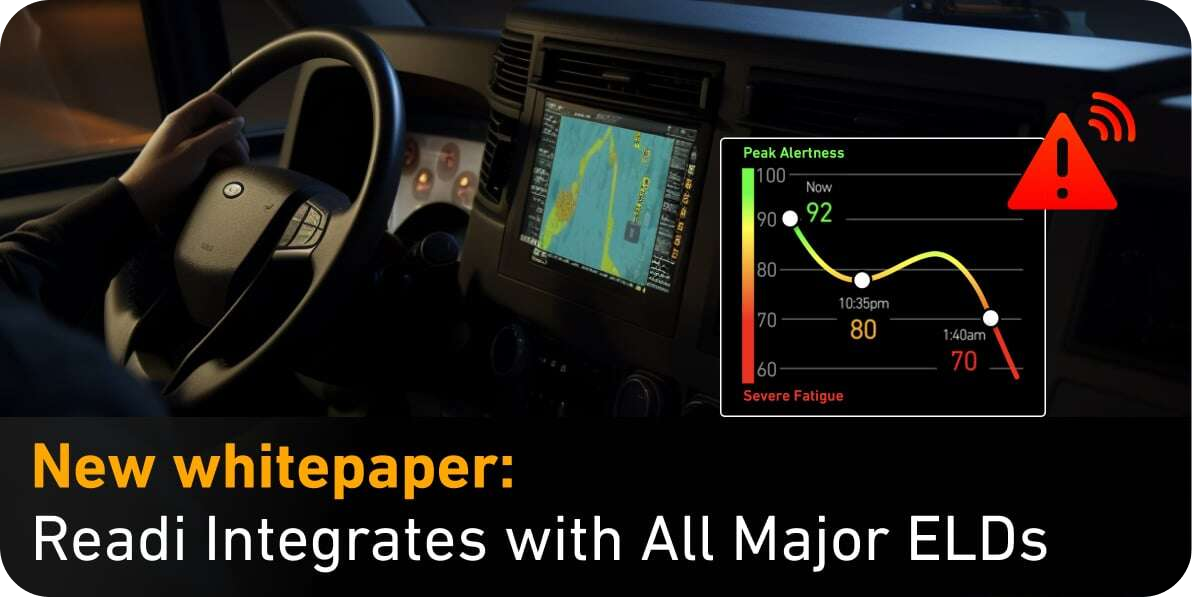
Validated Technology
The ReadiScore has been validated extensively by the US Dept. of Transportation, the Federal Aviation Administration, and many other public and private institutions.
The ReadiScore is the output of the SAFTE Biomathematical Fatigue Model, which was developed by researchers at the US Army’s Walter Reed Army Institute of Research. It has been studied and validated in 13 published independent papers. Our fatigue risk prediction has a validated 88% accuracy level.
Predictive Safety’s PRISM, on the other hand, has no accuracy figures quantified on schedule and time and attendance analysis.
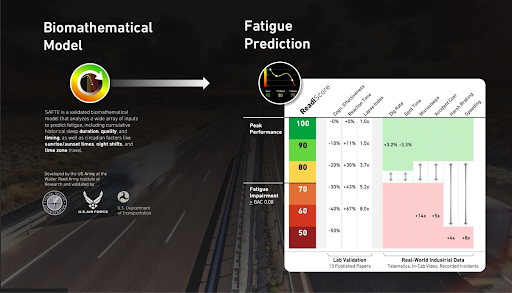
Impact Analysis
The Readi system has the ability to connect a driver’s fatigue scores to safety events to quantify the impact of fatigue mitigation on the organization.
A recent meta-study found that Readi could reliably predict if and when a driver would experience a 12x higher incidence of microsleeps vs. their baseline rested state. Additionally, the US Dept. of Transportation published a study revealing a 7.3x higher accident cost in cases where the ReadiScore had predicted high fatigue.
Similarly, two telematics studies conducted by Fatigue Science clients showed 8.5x higher incidence of harsh braking and a 4x higher incidence of speeding in cases where Readi had predicted high fatigue.
Pulsar Informatics, on the other hand, primarily offers insights into immediate fatigue risk based on PVT results and schedule data, lacking detailed impact analysis on safety events over time.
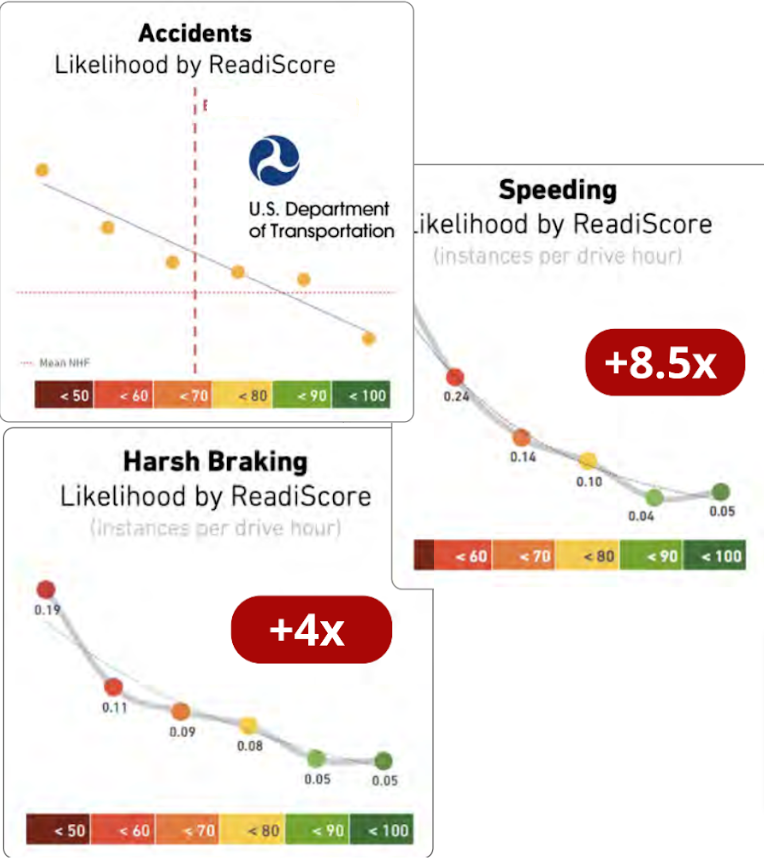
Full Cycle FRMS: Predicting Fatigue Risk Is Only the Start
Readi provides an organization with a full Fatigue Risk Management System. This means that a user can start and finish the fatigue workflow within the tools:
-Identify fatigued drivers
-Conduct a fit for duty assessment
-Evaluate and assign mitigations actions
-Analyze historical data to assess effectiveness of the actions and adjust policy and procedure accordingly
Predictive Safety, on the other hand, focuses only on identifying fatigued drivers.
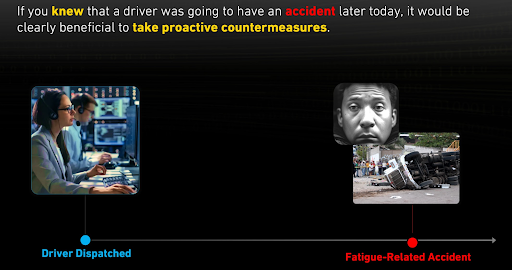

FAQ
How does Readi integrate with our existing fleet management systems?
Readi provides seamless integration with major ELD systems like Lytx and Omnitracs, enhancing the functionality of in-cab cameras and enabling more accurate fatigue monitoring and risk prediction.
How does Readi’s machine learning improve fatigue prediction?
Readi uses over 6 million sleep data points captured from our ReadiWatch users and AI-driven analytics to predict fatigue risk up to 18 hours in advance, offering more accurate and actionable insights compared to point-in-time tests.
Can we customize fatigue risk thresholds with Readi?
Yes, Readi allows fleet managers to customize fatigue risk thresholds based on their operational needs, ensuring that safety measures are tailored to specific fleet environments.
.png)
Manage and Mitigate Driver Fatigue with Fatigue Science
By predicting individualized fatigue levels for up to 18 hours in advance and flagging extreme fatigue risks to dispatchers, Readi has demonstrated the ability to improve safety records and prevent catastrophic events. Its validated technology, comprehensive analytics suite, worker alerts, and wide-ranging integrations with existing systems and workflows make it the better FRMS compared to Predictive Safety.
Related Content
Top AI Trends for Fleets in 2026
The trucking industry is entering a new phase of digital maturity. What began as basic telematics and compliance automation is now evolving into full-scale AI decision support across every part of fleet operations. By 2026, fleets will rely on…
Top AI Trends for Fleets in 2026
The trucking industry is entering a new phase of digital maturity. What began as basic telematics…
Fleet Insurance Bleeding Your Margins? Here’s How to Fight Back with Proactive Risk Management
For fleet operators, insurance is a volatile, growing burden that can make or break margins.
Fatigue, Fleet Safety, and the Nuclear Verdict Era: Why Predictive Risk Management Is No Longer Optional
The trucking industry is under legal siege. As reported by the American Transportation Research…
How AI Is Powering Competitive Advantage in Fleet Management
Fleet managers are turning to artificial intelligence (AI) not just to streamline operations but to…
